Describe the transformation defined by the rule (x,y) -> (x+1, y+1).
Translation by the directed line segment from (0, 0) to (1, 1) OR Translation right 1 unit and up 1 unit
Find the center and radius of the circle given by the following equation.
(x-3)^2+(y+5)^2=36
center: (3, -5)
radius: 6
Write the equation of the line passing through point (-3, 4) with slope 1/2 .
y-4=1/2(x+3)
Find the distance between (6, 17) and (9, 15).
sqrt13
The points P(5,-9), Q(9, -2), R (2,-3) form triangle PQR. Find the coordinates of the image under the rule (x,y)->(x,-y) .
P': (5, 9)
Q': (9, 2)
R': (2, 3)
The point (8, -1) is on a circle with center (4,2). Write the equation of the circle.
(x-4)^2+(y-2)^2=25
What is the slope of a line parallel to y=2/3x+8?
2/3
Find the Slope of the segment.
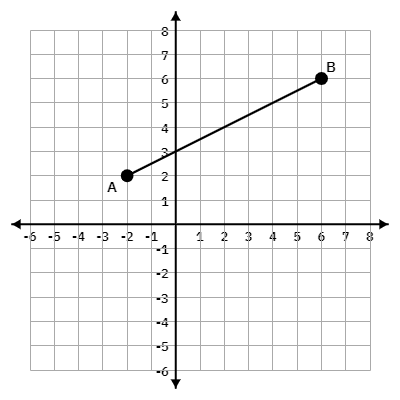
(1/2)
Write a rule that describes this transformation.

(x-3) -> (x-3, -y)
Find the center and radius of the circle given by the following equation.
x^2-5x+25/4+y^2+24y+144=16
center:
(5/2, -12)
radius: 4
Write the equation of the line perpendicular to y+1=2(x-1) passing through (-5, 2).
y-2=-1/2(x+5)
The points A(-7,3), B(-3, -9), C (0, -8), D(-4, 4) form rectangle ABCD. Find the area of the rectangle.
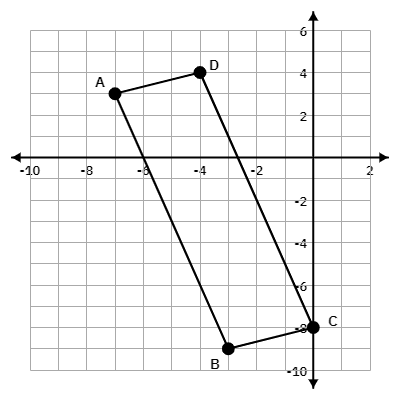
40 square units
Determine whether the transformation rule represents a rigid transformation, a similarity transformation, or neither.
(x,y)->(4x,3y)
neither
Find the center and radius of the circle given by the following equation.
x^2+y^2-18x-14y+66=0
center: (9,7)
radius: 8
The image shows the line q. Write the equation of the line parallel to q that passes through (-4, 4).
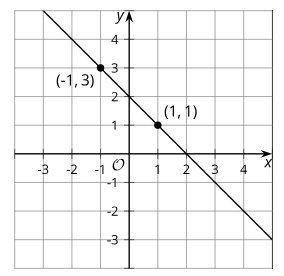
y-4=-(x+4)
The points A(2,3), B(5, -1), C (10,11) form triangle ABC. Find the perimeter of the triangle. Round to the nearest thousandth.
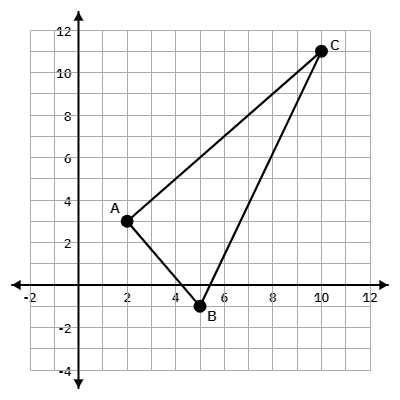
29.314 units
Select all the transformation rules that produce a congruent image.
a. (x, y)->(-y, x)
b. (x, y)->(2x,2y)
c. (x,y)->(x+5, y-2)
d. (x,y)->(x,y)
e. (x,y)->(-2x,5y)
a, c, d
Circle O has center (-1,-2) and radius 7 units. Select all points that lie on the circle.
a. (-1, 5)
b. (3, 4)
c. (2, -8)
d. (6, -2)
a,d
Select all lines perpendicular to the line y-7=5/3(x-1) .
a. 3y=-5x+9
b. y-9=-3/5(x-3)
c. -3x + 5y = 6
d. y=-6/10x+2
b, d
The points A (-6, 0), B (-5, -4), C (-1, -3), and D (-2, 1) form a quadrilateral which is graphed below. Prove quadrilateral ABCD is a square.
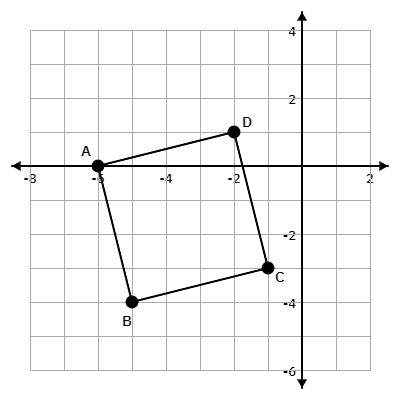
The slopes of the sides AB, BC, CD, and DA are -4, 1/4, -4, and 1/4, so each pair of intersecting sides is perpendicular. That means the quadrilateral has four right angles. All four sides have length
sqrt17
units so they are equal. Since quadrilateral ABCD has four right angles and all four sides are the same length, it is a square.